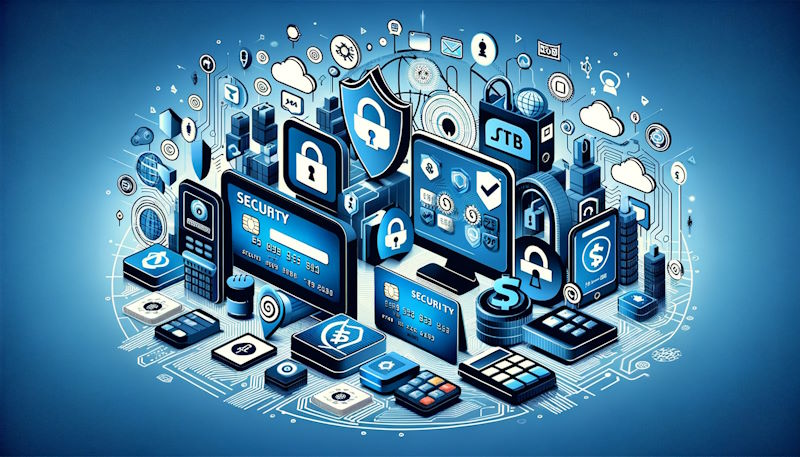The safety of online transactions has become a paramount concern for consumers and businesses alike in today’s digital world. With the rise of online payment methods, determining which is the most secure can be challenging.
This comprehensive guide explores the security aspects of popular online payment methods, their benefits, and drawbacks, and sheds light on what is considered the most secure way to transact online.
Understanding Online Payment Security
Before diving into the most secure methods, it's crucial to understand what makes an online payment secure. Key components of secure online transactions include encryption, authentication, privacy protection, and fraud prevention measures. The robustness of these components often determines the overall security of a payment method.
Popular Online Payment Methods
Several payment methods dominate the online landscape, each with unique security features and potential vulnerabilities:
- Credit and Debit Cards: Widely used for their convenience and speed, card payments are protected by encryption and security protocols.
- Bank Transfers: Direct bank transfers are generally secure, relying on the bank's security systems and protocols.
- Digital Wallets: Services like PayPal, Apple Pay, and Google Wallet offer an extra layer of security by allowing users to pay without directly exposing their card details. Digital wallets typically use tokenization.
- Cryptocurrencies: Known for using blockchain technology, cryptocurrencies provide a decentralized and often anonymous way to transfer money.
Evaluating the Security of Payment Methods
To determine the most secure online payment method, it's important to evaluate each based on several criteria:
- Encryption Strength: Strong encryption ensures that transaction details are securely transmitted and inaccessible to unauthorized parties.
- User Authentication: Methods that employ rigorous user authentication, like multi-factor authentication, provide an added layer of security.
- Fraud Prevention Tools: Look for payment methods with real-time fraud monitoring and other preventive measures.
Security of Digital Wallets
Many experts consider digital wallets to be among the most secure online payment methods available today. Here's why:
- Tokenization: Digital wallets use tokenization technology, which replaces sensitive card details with a unique token during transactions, reducing the risk of data breaches. The tokens cannot be reverse-engineered.
- Biometric Authentication: Most smartphones now feature biometric authentication, which uses unique physical features like fingerprints, facial patterns, and voice for verification.
- Limited Exposure: Since your actual card numbers are not transmitted during the transaction, the risk of fraud is significantly reduced.
Credit and Debit Cards: A Closer Look
Credit and debit cards are the original form of online payment but come with their own set of security features:
- Chip Technology: EMV chips in cards provide dynamic authentication, making it difficult for fraudsters to replicate.
- Security Codes: CVV codes add a layer of security to online transactions.
- Fraud Monitoring: Many card issuers offer round-the-clock fraud monitoring and zero-liability policies for unauthorized transactions.
The Emergence of Cryptocurrencies
Cryptocurrencies offer a unique approach to online payment security:
- Blockchain Technology: The decentralized nature of blockchain provides a high level of security and transparency.
- Anonymity: Some cryptocurrencies offer anonymous transactions, which can protect user identity, though this can be a double-edged sword.
Assessing Bank Transfers Security
Bank transfers are a traditional method often considered secure due to the involvement of established financial institutions:
- Robust Banking Protocols: Banks employ extensive security measures, including encryption and fraud detection systems.
- Regulatory Compliance: Banks are typically required to adhere to strict regulatory standards for security and customer protection.
What Is the Most Secure Online Payment Method?
After evaluating various options, digital wallets consistently rank highly in terms of security for several reasons. They benefit from the security measures of underlying technologies like tokenization, robust authentication methods, and limited exposure of personal and financial details. However, the most secure method for an individual or business can depend on specific needs, preferences, and the transaction context.
Best Practices for Secure Online Transactions
Regardless of the payment method chosen, the following best practices can enhance security:
- Use Strong Passwords and MFA: Employ strong, unique passwords and enable multi-factor authentication where available.
- Keep Software Updated: Ensure that your devices and applications are regularly updated to protect against vulnerabilities.
- Monitor Accounts: Regularly check your accounts for any unauthorized or suspicious activity.
- Educate Yourself: Stay informed about the latest security threats and how to protect against them.
Final Thoughts
Determining the most secure online payment method requires an understanding of the various options and their respective security features. While digital wallets are often considered among the safest due to their advanced encryption, tokenization, and limited data exposure, the best choice depends on individual circumstances and preferences.








